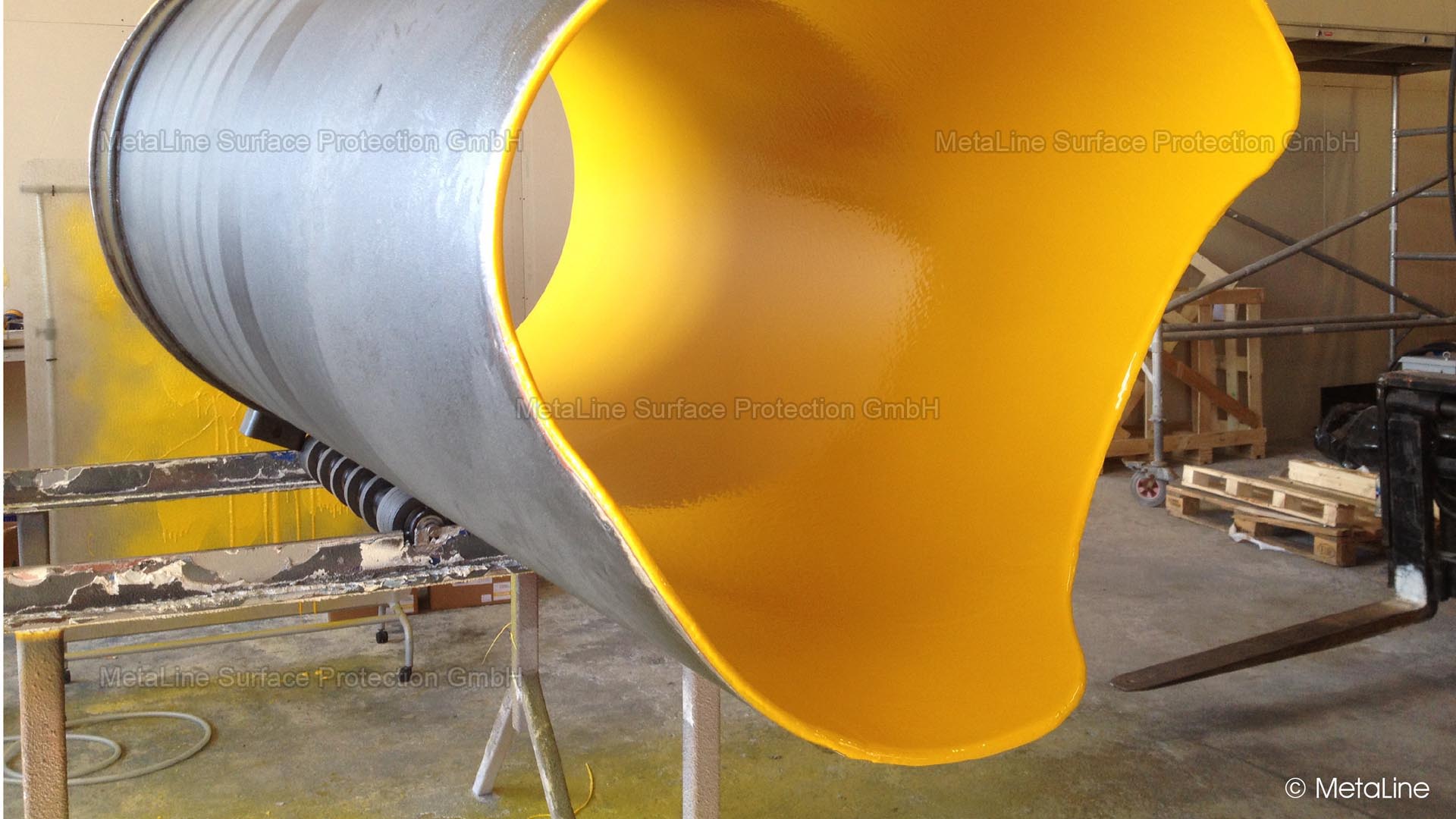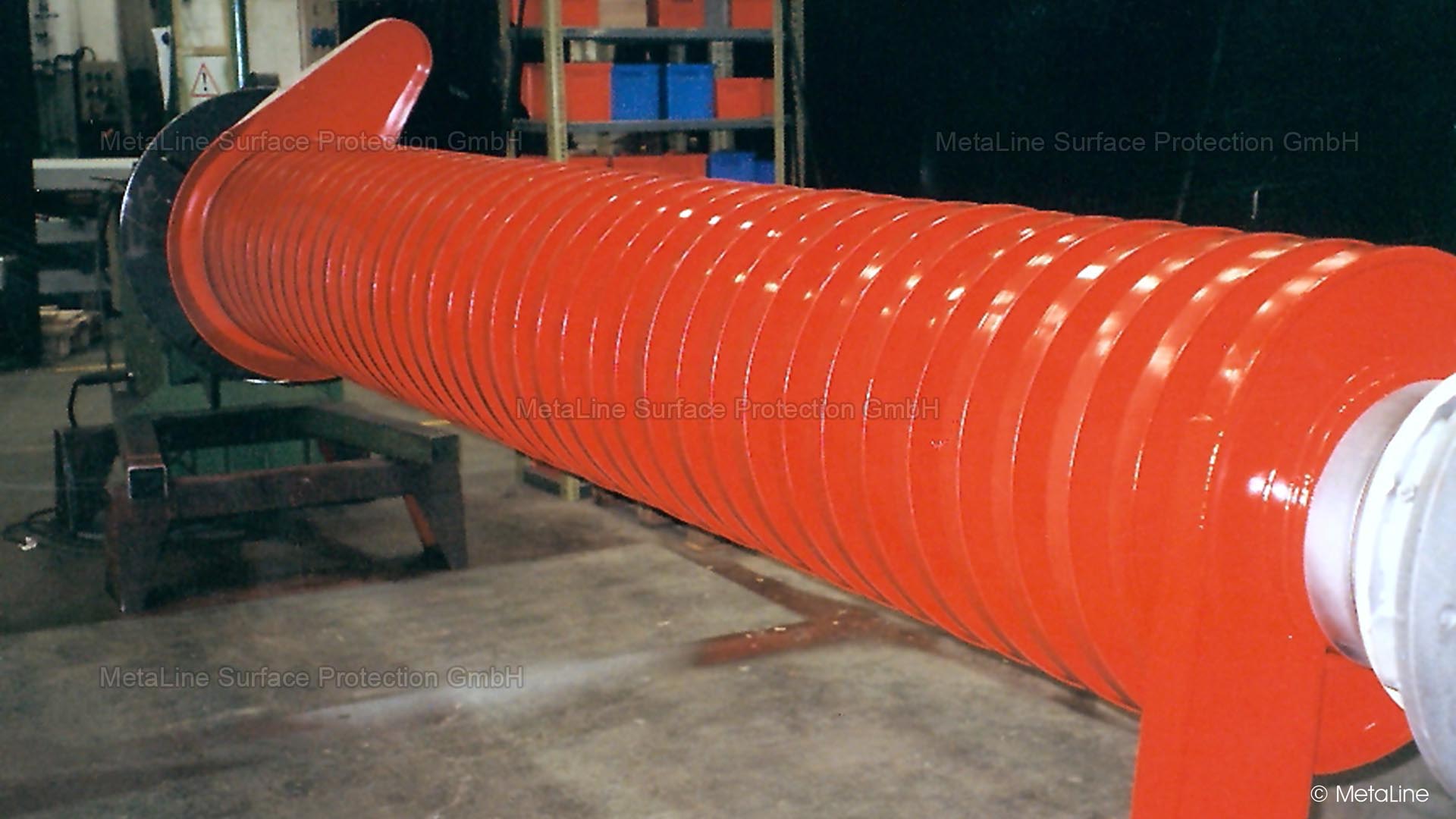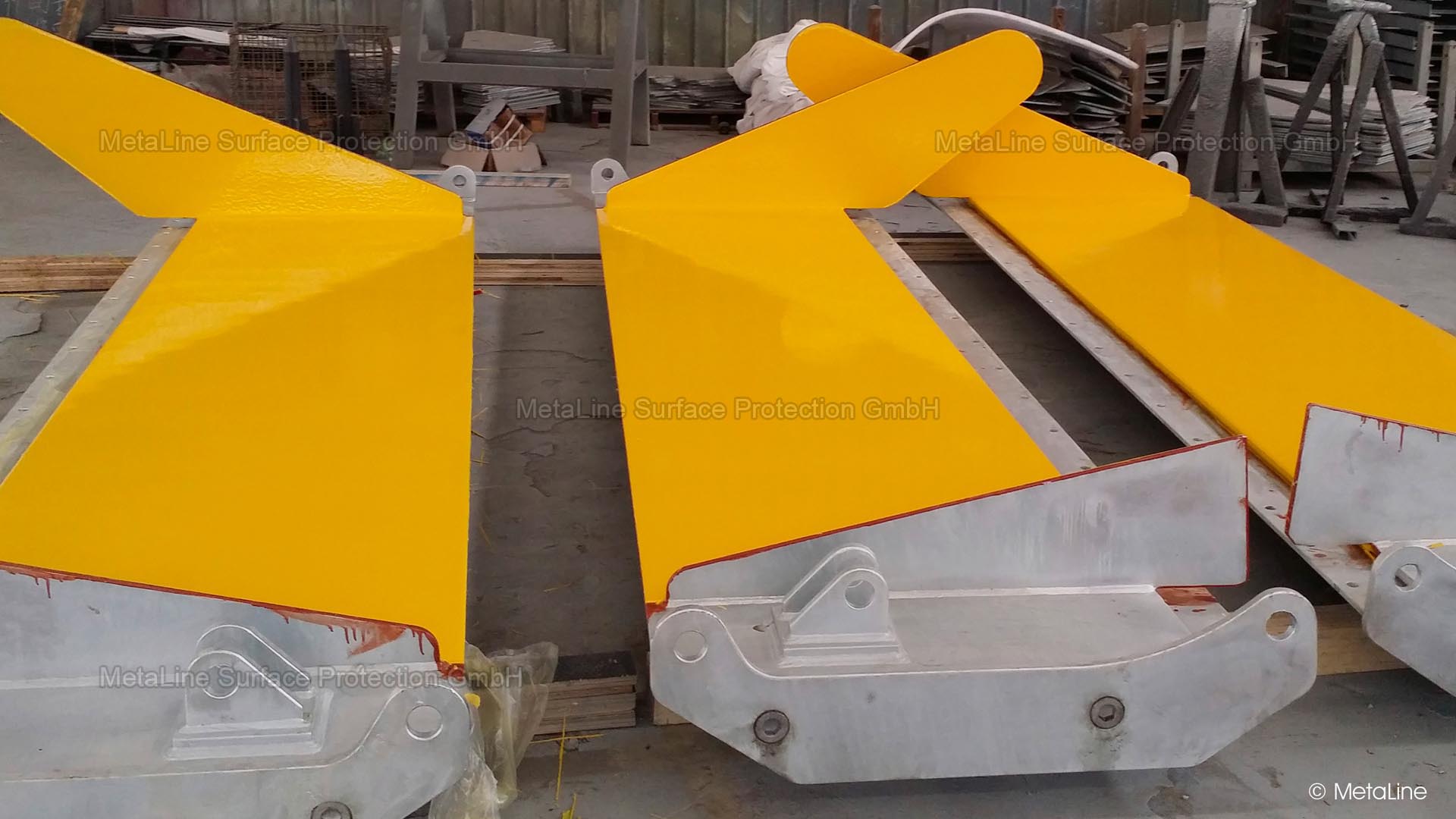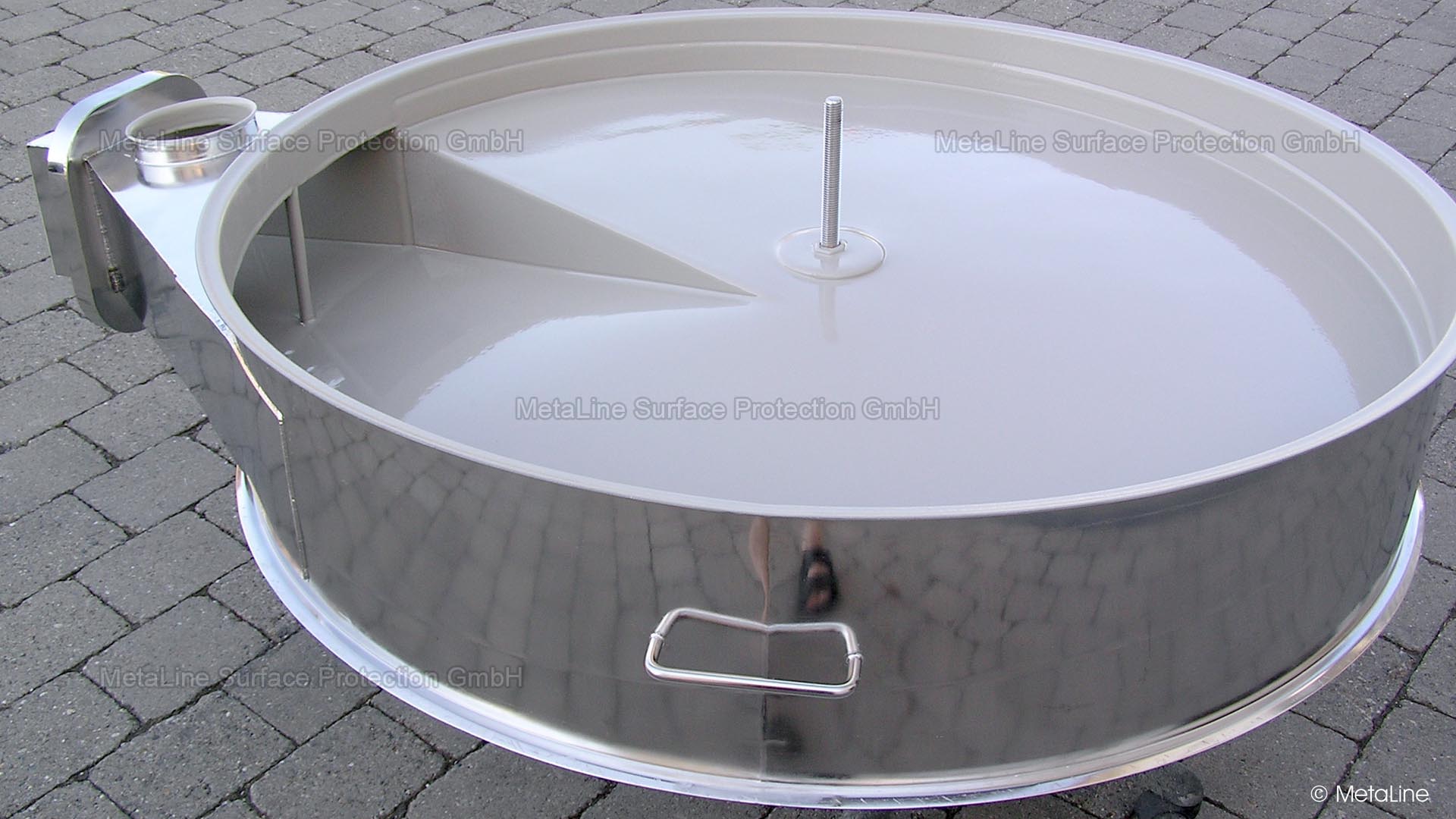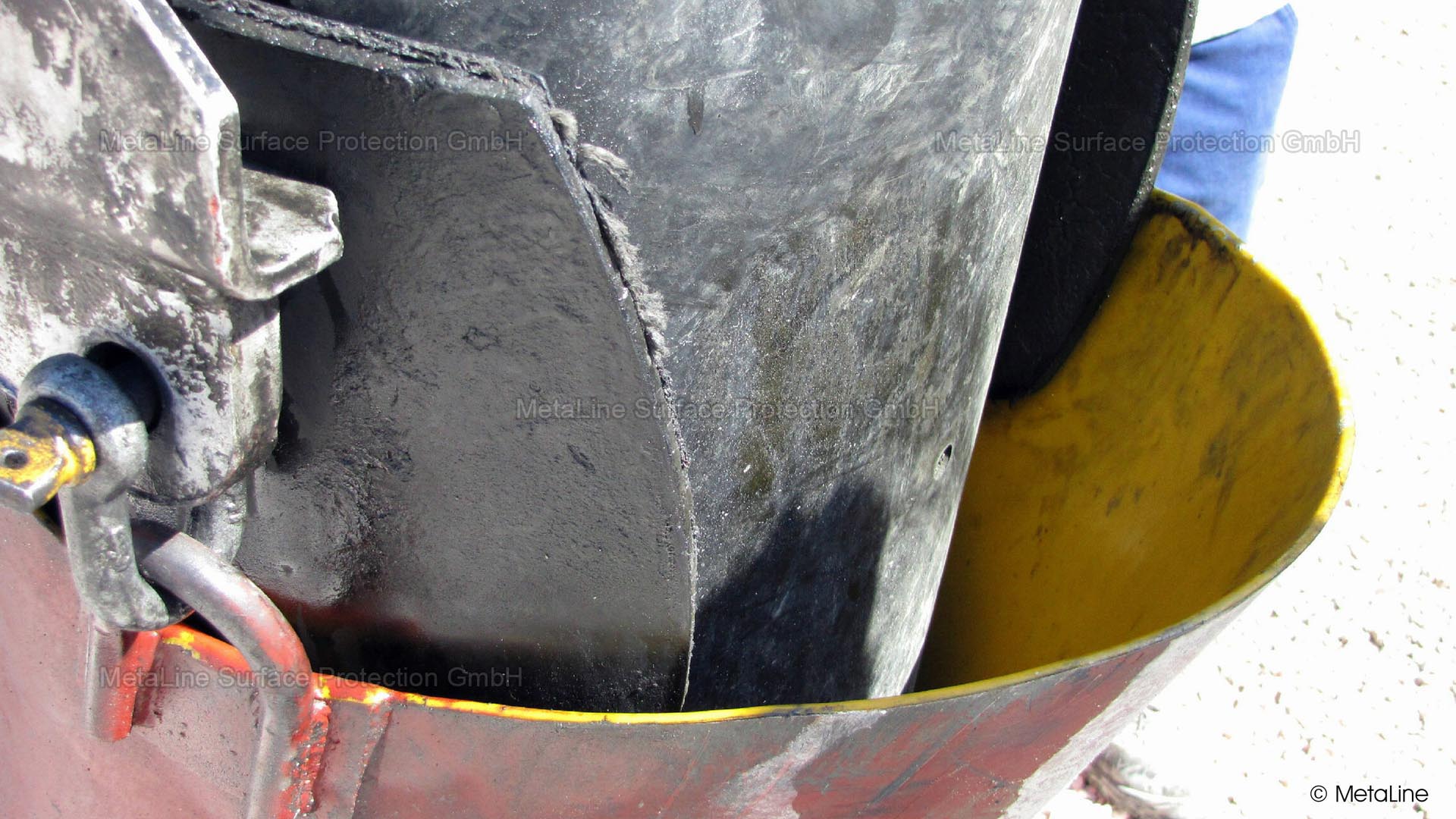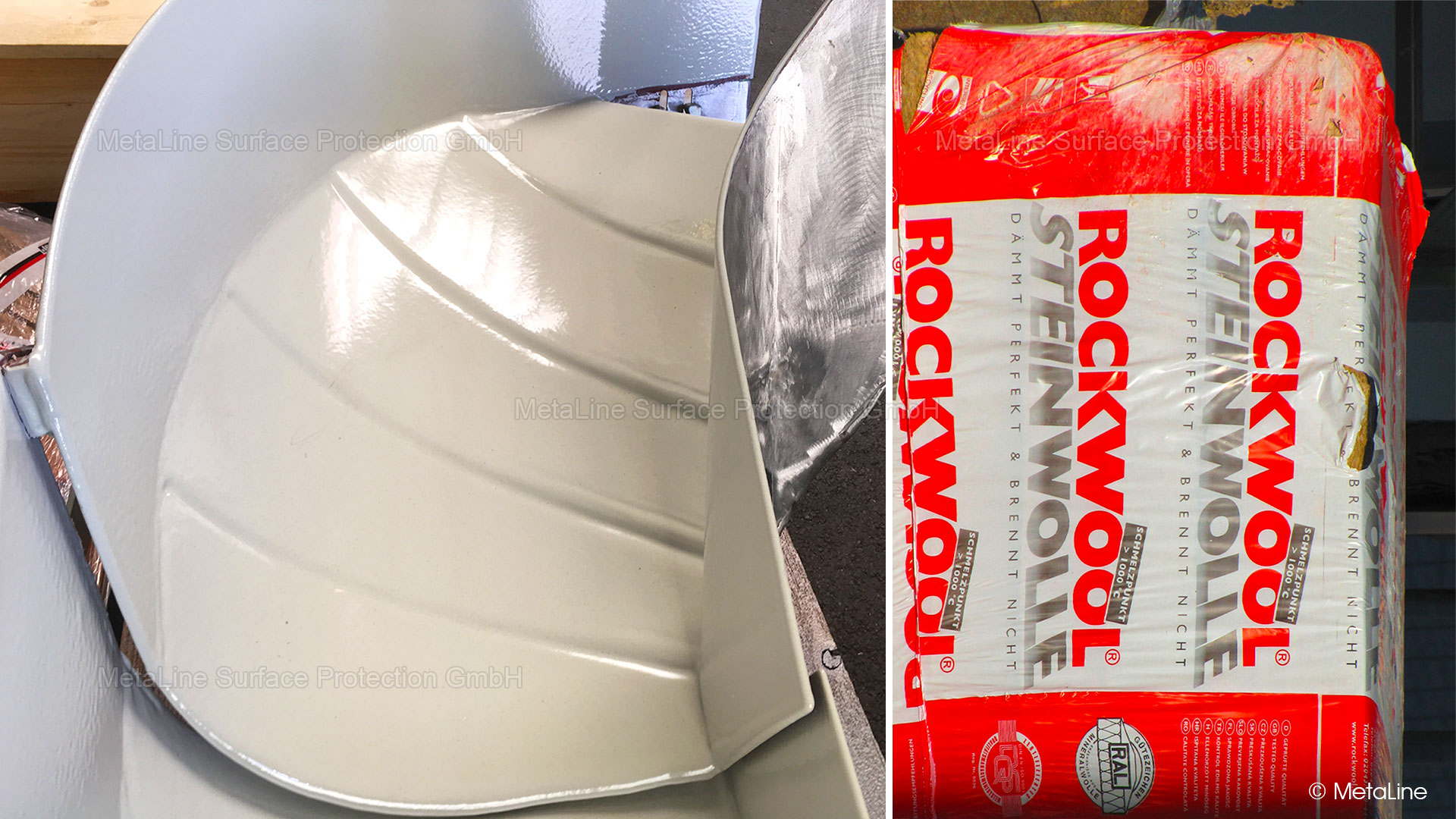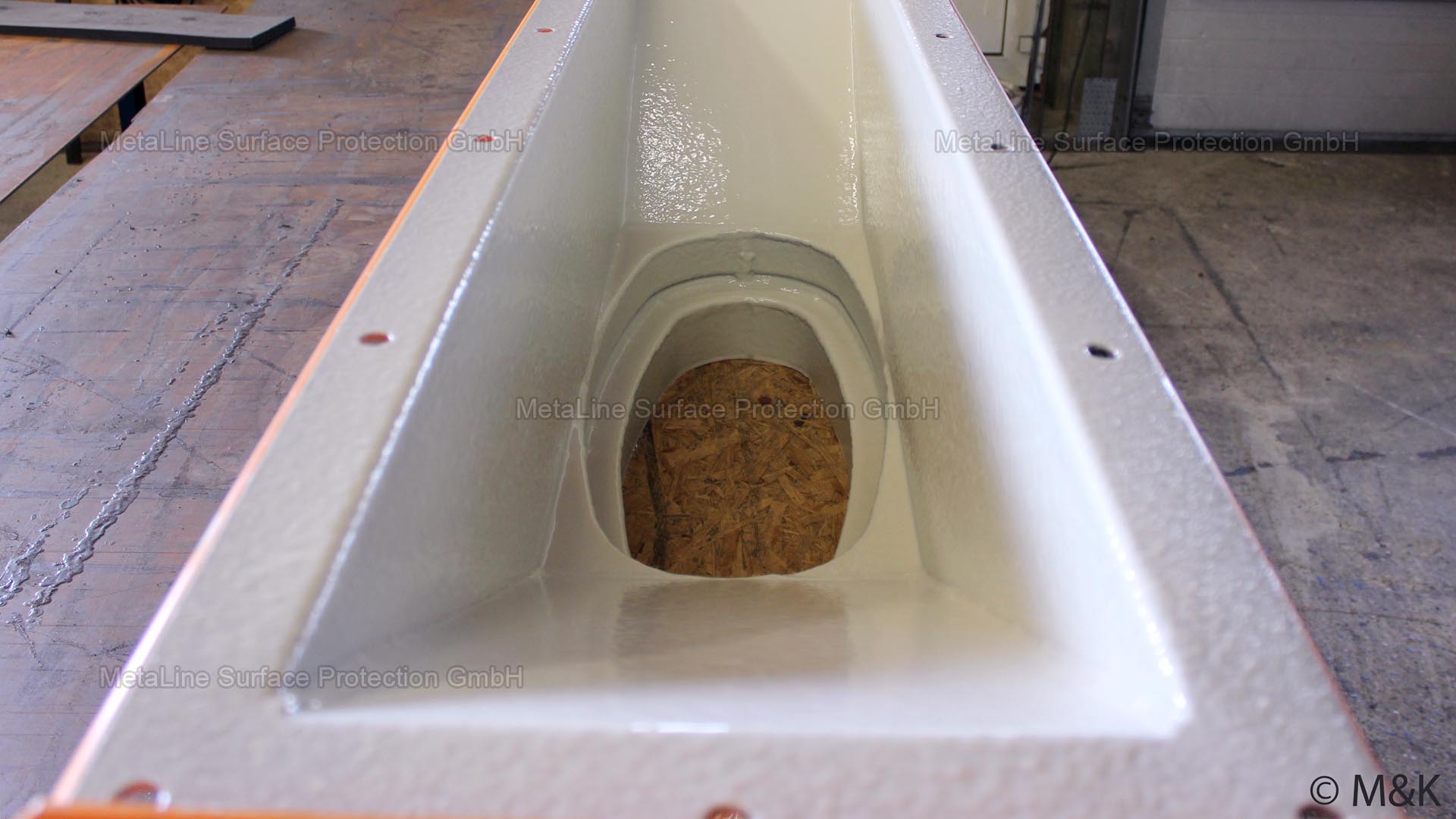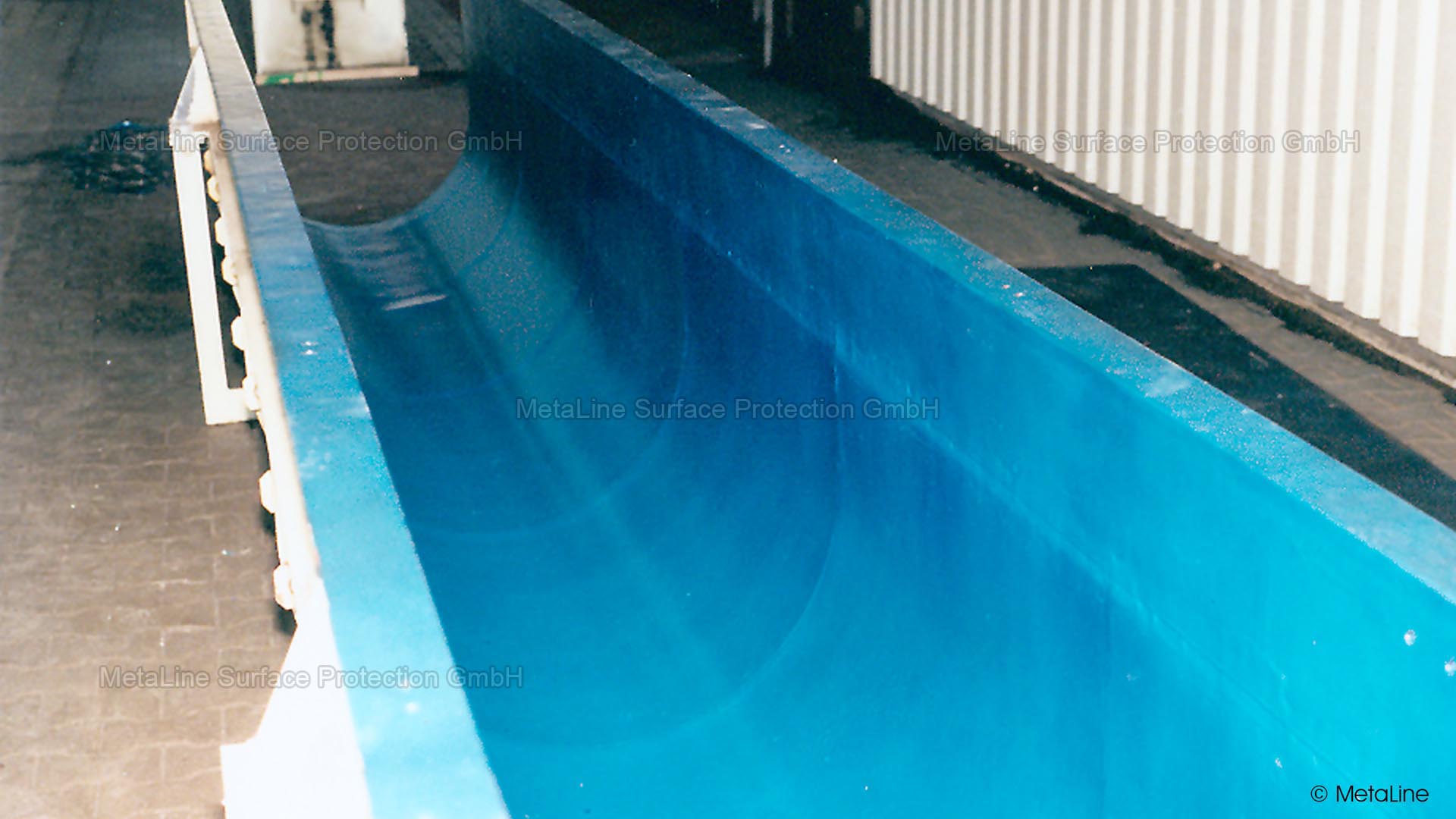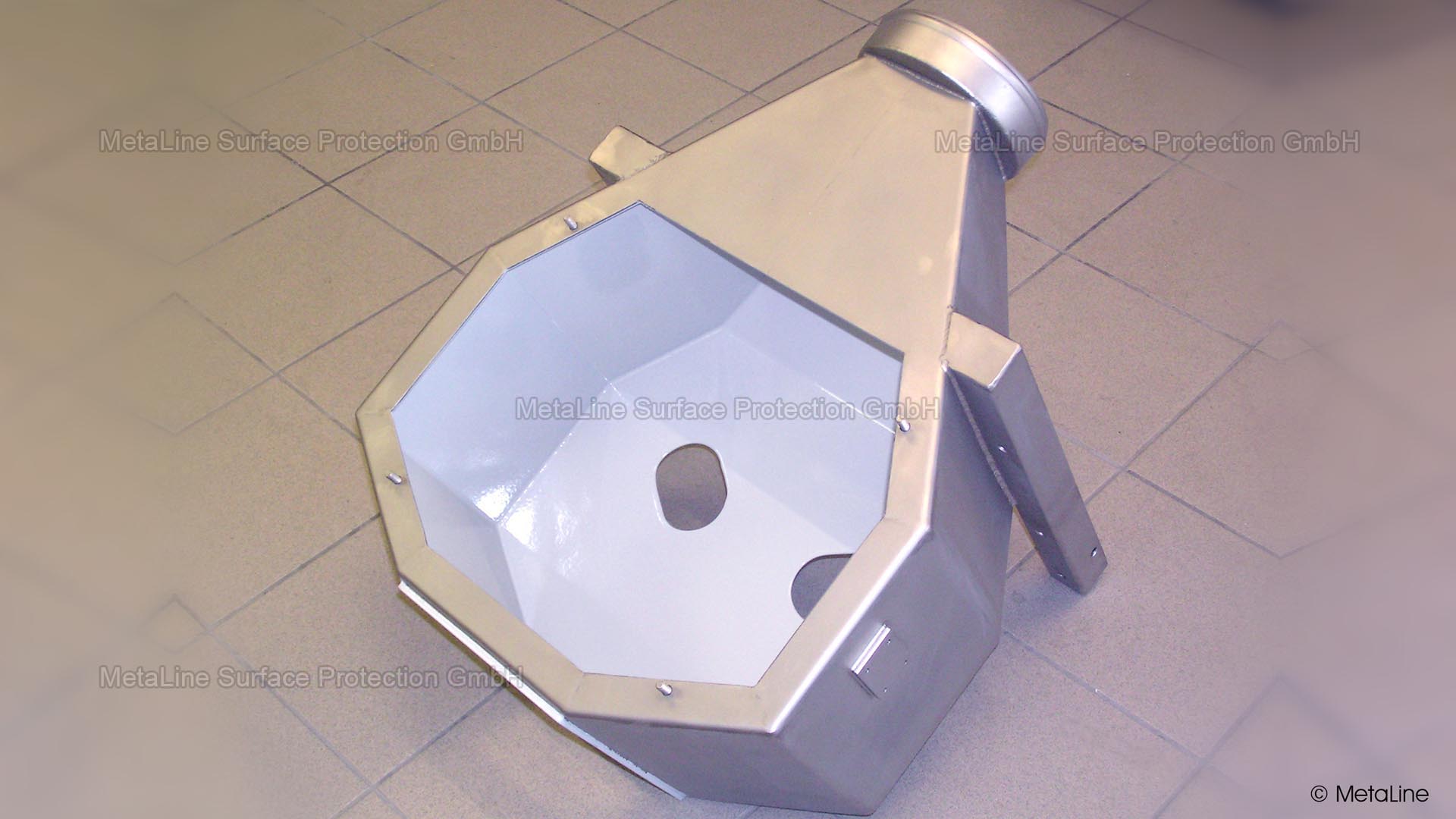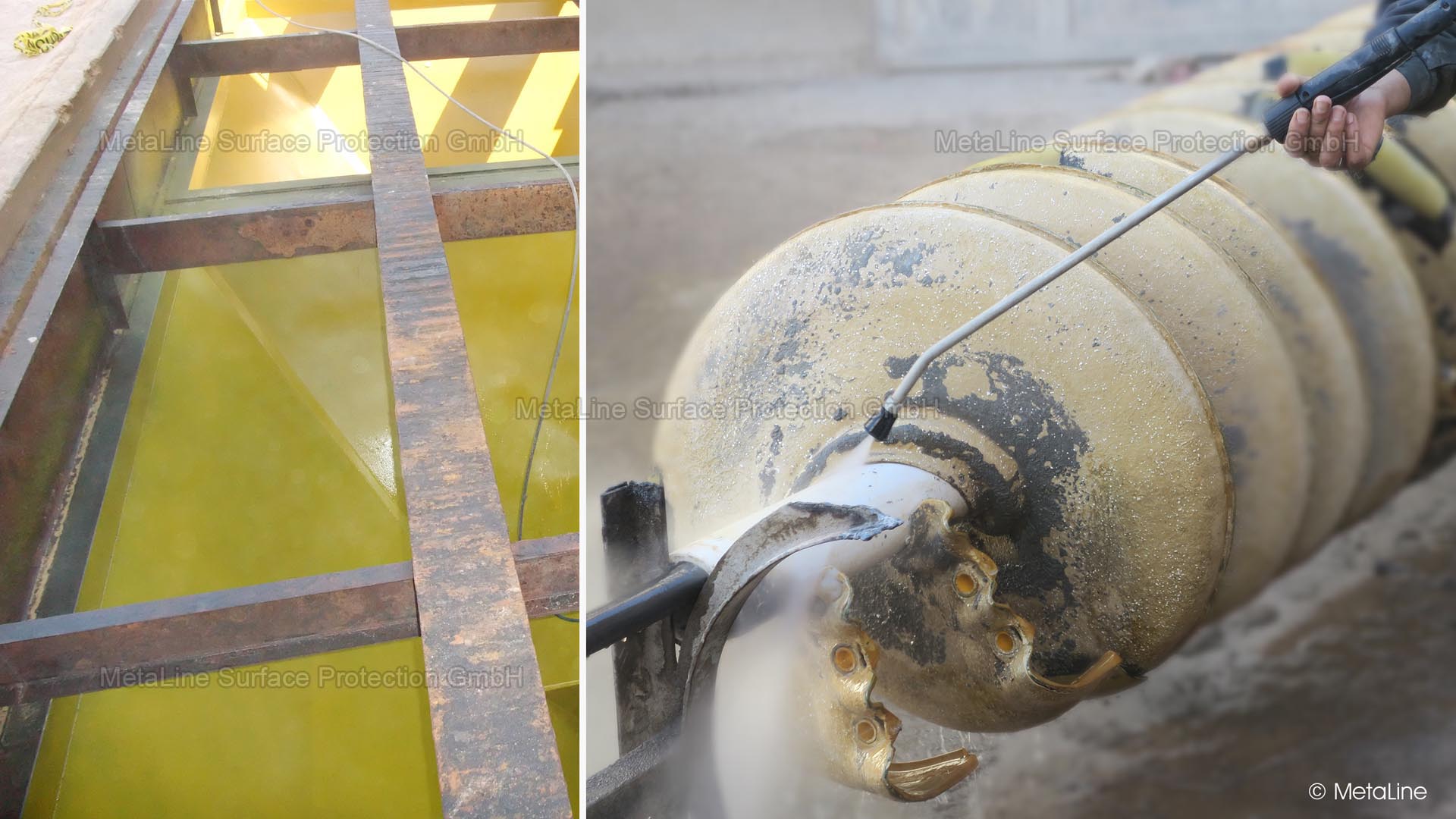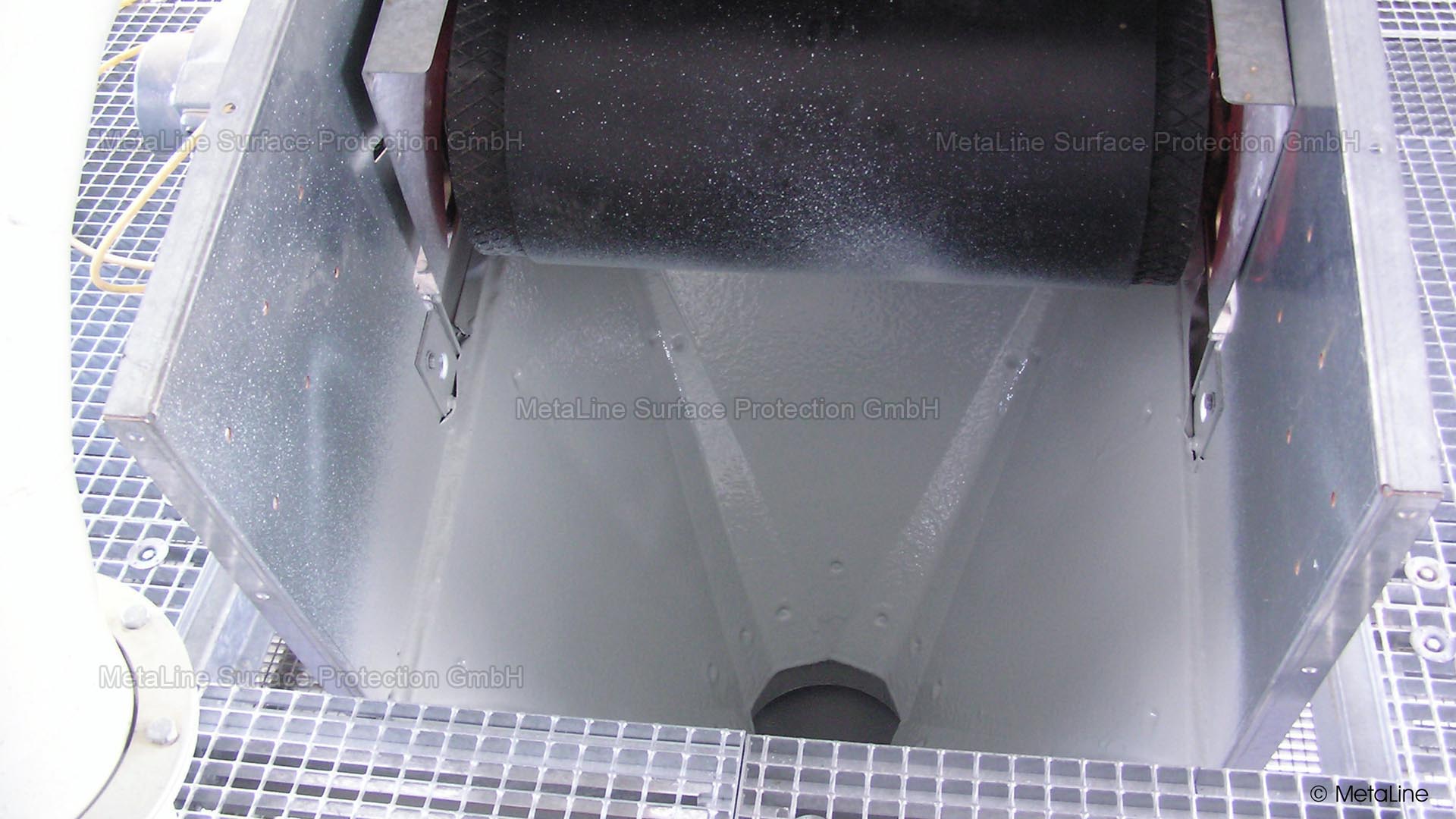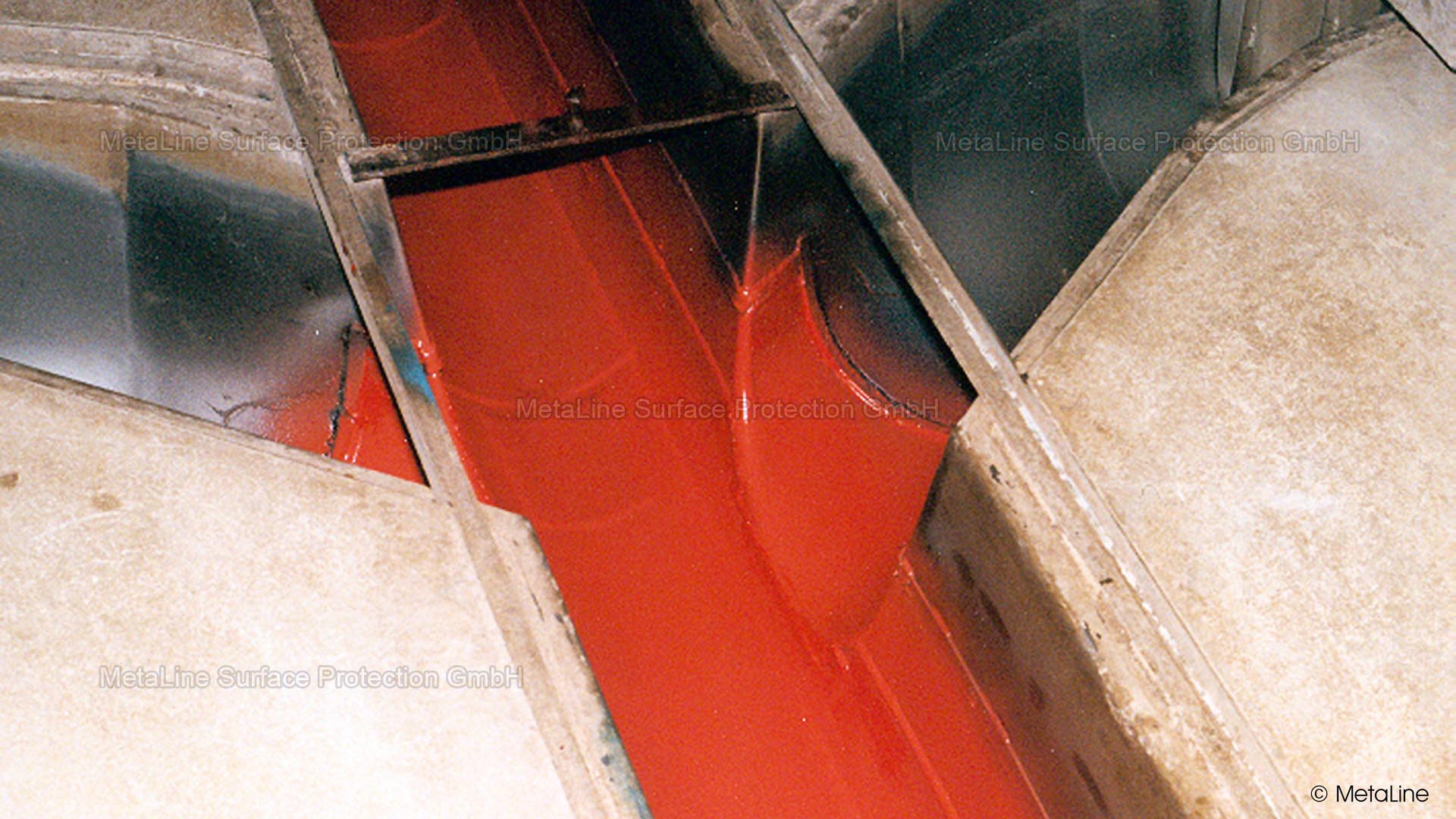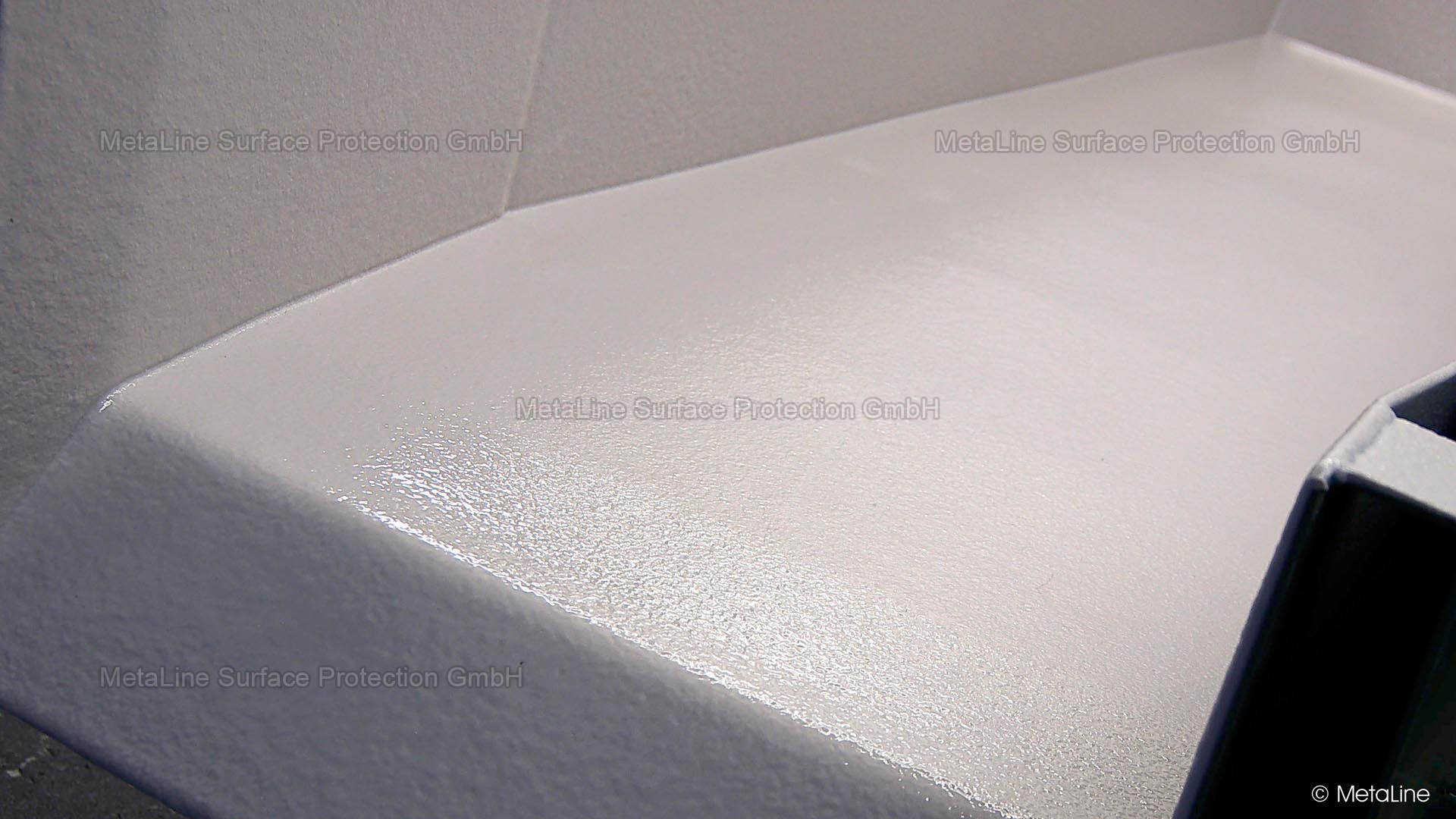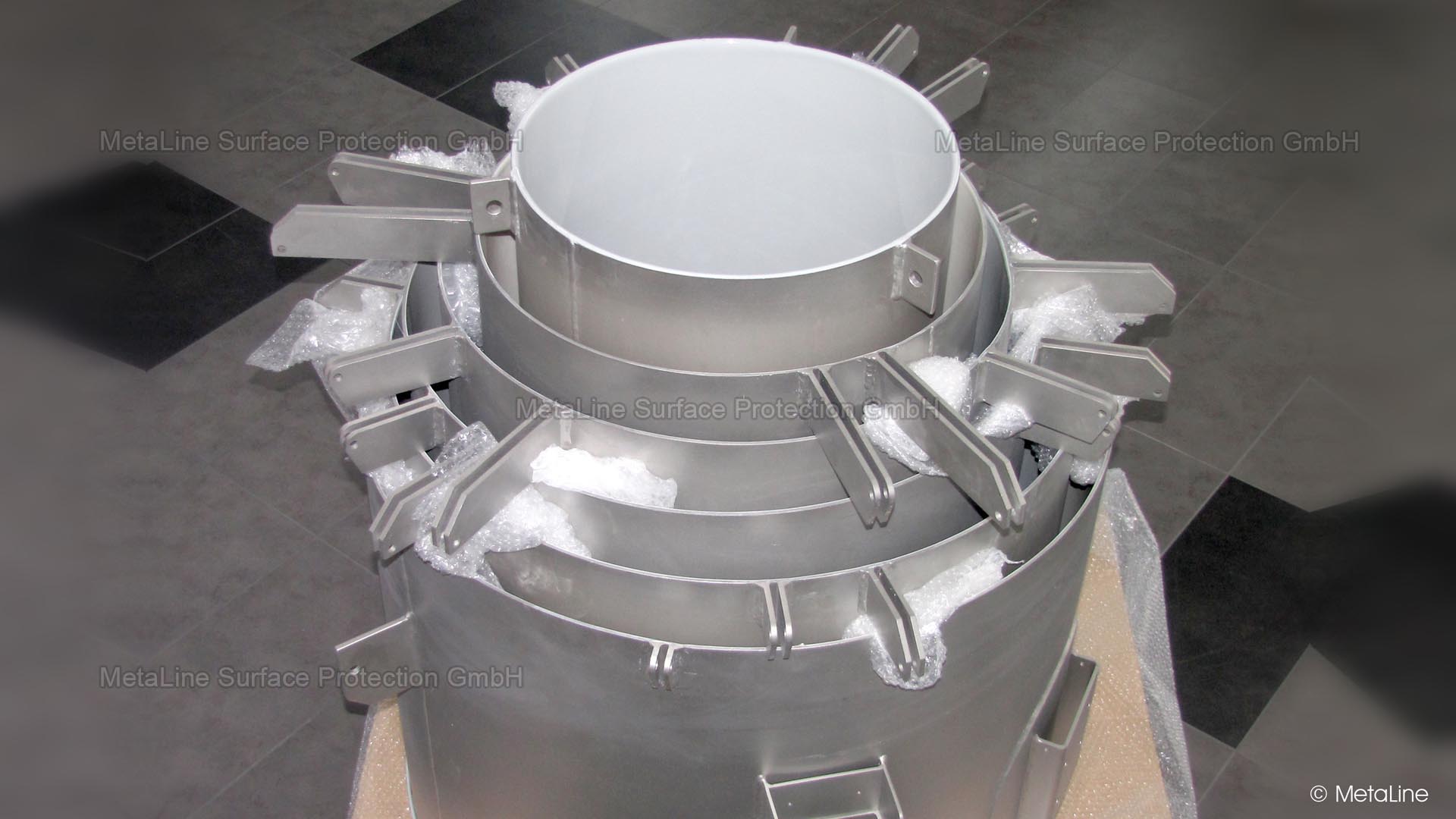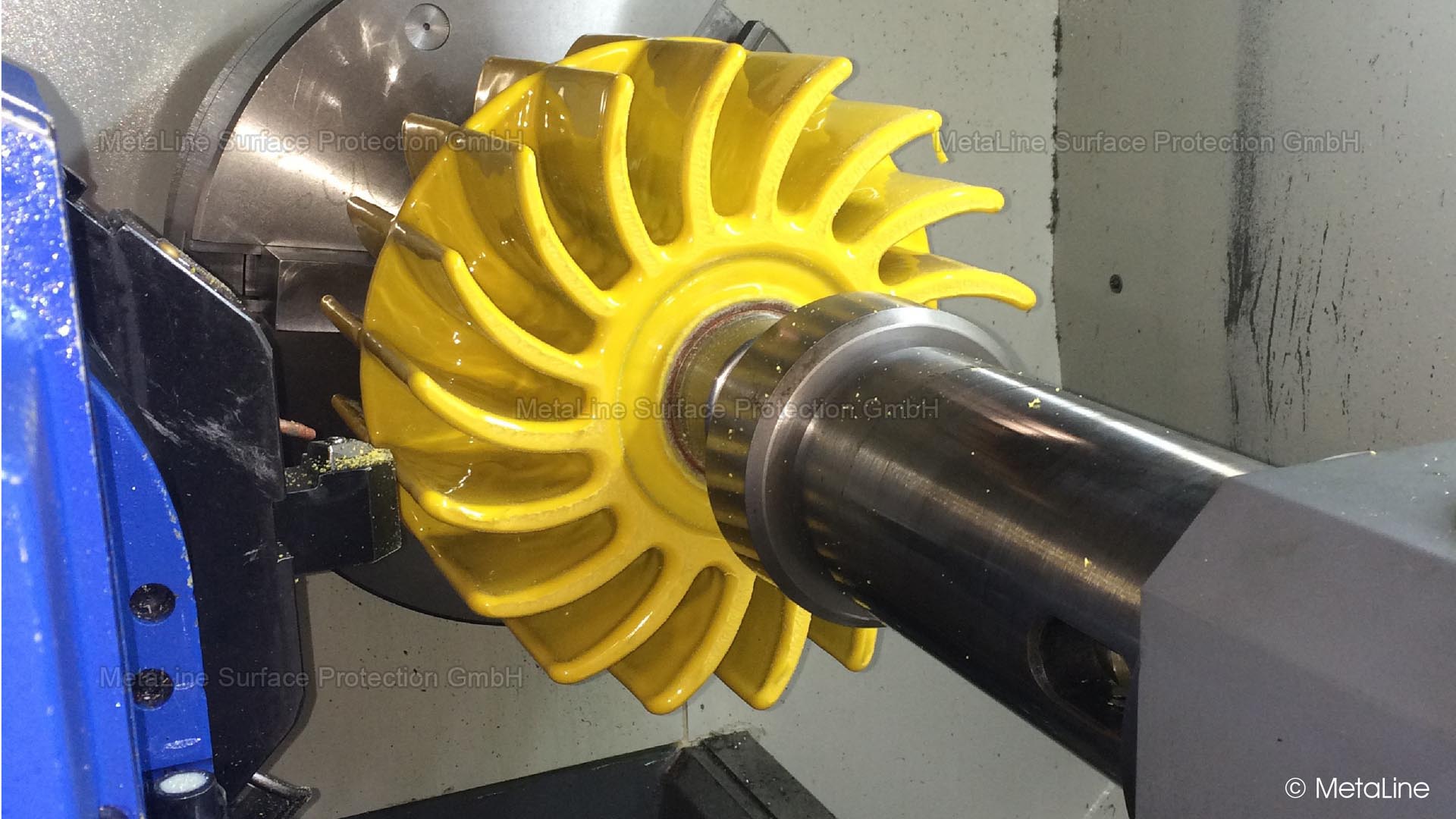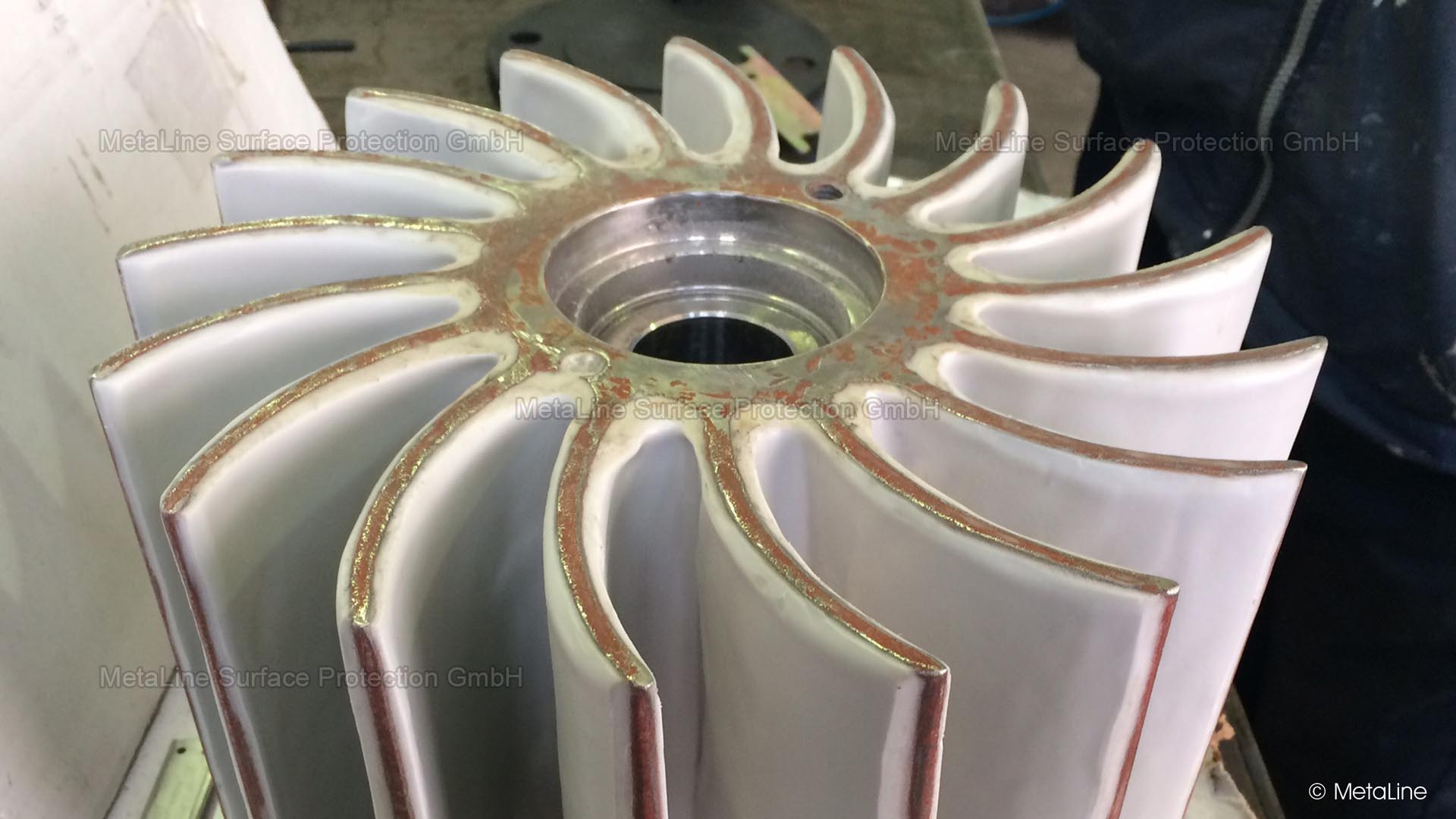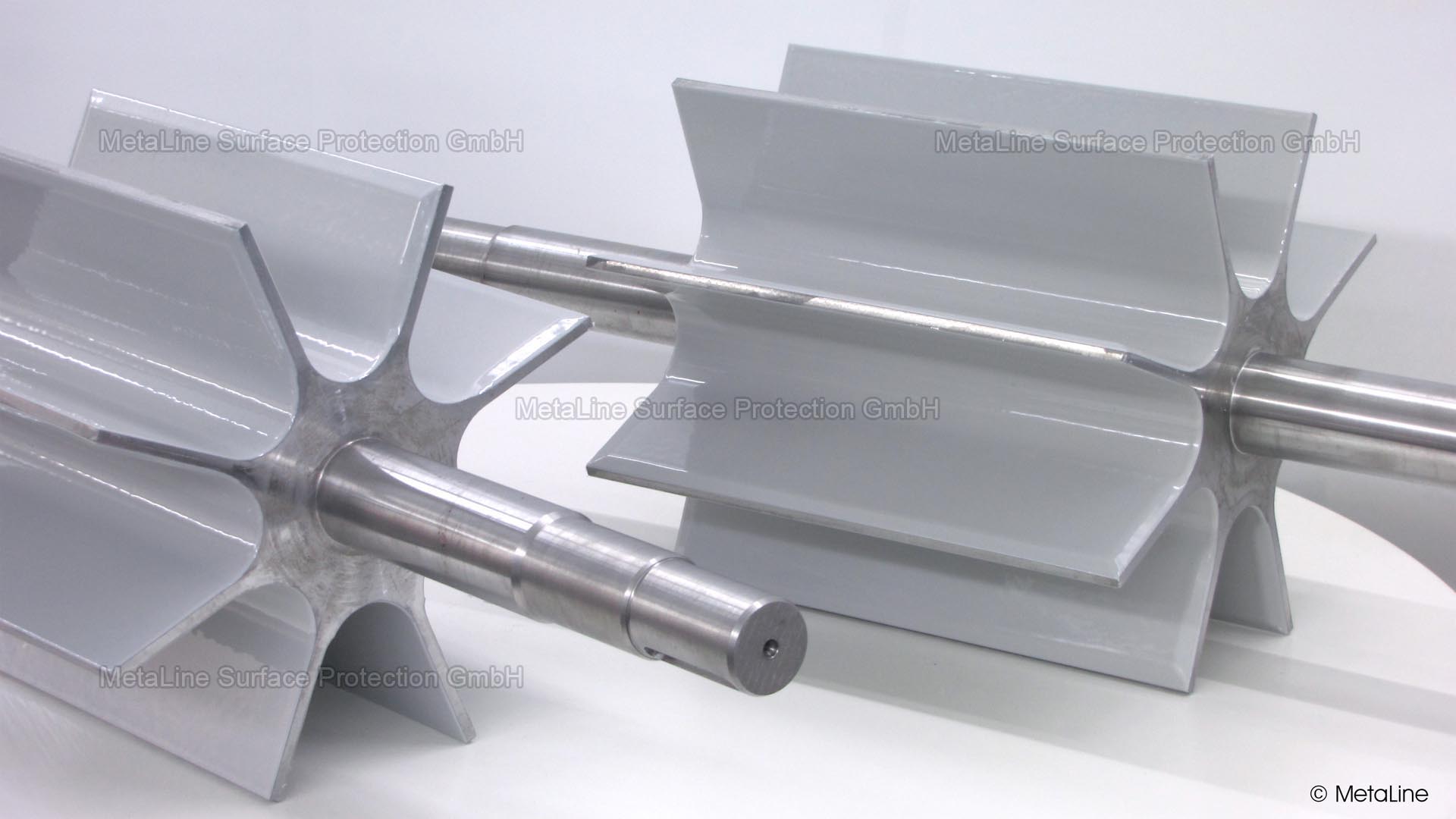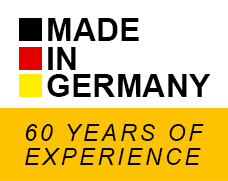Modern bulk materials are usually conveyed mechanically or pneumatically by gravity, vibration, suction or blowing. Same as, the surfaces are exposed to high continuous loads by grinding, scratching, chafing, impacting or sliding. Noise, friction losses or damage to the bulk material itself increase the need to install or retrofit high-performance surface protection systems into conveying equipment.
Ask us about: telescopic loading spouts, filling appliances, slurry channels (sluice), spiral conveyors, conveyor chutes / dosing equipment, loading chutes / bellows, pepple mills (mineral technology)
We have a solution for problems with wear on bulk material plants! Scope of application: Telescopic loading spouts Filling appliances Slurry channels Spiral conveyors Chutes / dosing equipment Loading pipes Pepple mills (mineral technology) MetaLine - Technical solutions in detail METALINE SERIES 700 MetaLine Series 700 coatings may be applied with different static friction values (my (0) = 0.1 up to 0.7). Uniform, non-sticksliding is supported actively. Clattering noise is deadened, particularly high resonance tones are inhibited before fully developing. Noise reduction of up to 10 db(A) is possible. The required layer thickness varies depending on feeding velocity, particle size and throughput between 0.5 and approximately 10 mm. The elastic, ductile protective film is electrically insulating but may, however, not be used in explosion-hazard areas.
MetaLine Series 700 – MetaLine Series 700 coatings can be applied with different static friction values (my(0) = 0.1 up to 0.7). Even, non-stick sliding is actively supported. Clattering noise is damped, in particular, the high resonance tones are inhibited in their development. Noise reductions of up to 10 db(A) are possible. The required coating thickness varies between 1 (40 mils) and approximately 10 mm (400 mils) depending on the conveying speed, particle size, and throughput. The elastic, stretchable protective film is electrically insulating, but must not be used in explosion hazardous (ATEX) areas.

















